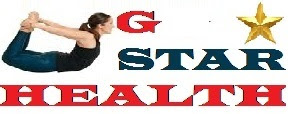How to understand High Blood Pressure Readings and What are Home Remedies for High Blood Pressure?
Narrow arteries increase resistance. The narrower your arteries are, the higher your blood pressure will be. Over the long term, increased pressure can cause health issues, including heart disease.
Two numbers create a blood pressure reading:
Systolic pressure: This is the first, or top, number. It indicates the pressure in your arteries when your heart beats and pumps out blood.
Diastolic pressure: This is the second, or bottom, number. It’s the reading of the pressure in your arteries between beats of your heart.
Five categories define blood pressure readings for adults:
Healthy: A healthy blood pressure reading is less than 120/80 millimeters of mercury (mm Hg).
Elevated: The systolic number is between 120 and 129 mm Hg, and the diastolic number is less than 80 mm Hg. Doctors usually don’t treat elevated blood pressure with medication. Instead, your doctor may encourage lifestyle changes to help lower your numbers.
Stage 1 hypertension: The systolic number is between 130 and 139 mm Hg, or the diastolic number is between 80 and 89 mm Hg.
Stage 2 hypertension: The systolic number is 140 mm Hg or higher, or the diastolic number is 90 mm Hg or higher.
Hypertensive crisis: The systolic number is over 180 mm Hg, or the diastolic number is over 120 mm Hg. Blood pressure in this range requires urgent medical attention. If any symptoms such as chest pain, headache, shortness of breath, or visual changes occur when blood pressure is this high, medical care in the emergency room is needed.
A blood pressure reading is taken with a pressure cuff. For an accurate reading, it’s important you have a cuff that fits. An ill-fitting cuff may deliver inaccurate readings.
Blood pressure readings are different for children and teenagers. Ask your child’s doctor for the healthy ranges for your child if you’re asked to monitor their blood pressure.
Healthy lifestyle changes can help you control the factors that cause hypertension. Here are some of the most common home remedies.
Developing a healthy diet
A heart-healthy diet is vital for helping to reduce high blood pressure. It’s also important for managing hypertension that is under control and reducing the risk of complications. These complications include heart disease, stroke, and heart attack.
A heart-healthy diet emphasizes foods that include:
fruits
vegetables
whole grains
lean proteins like fish
Here are some of the most common dietary recommendations for people with hypertension.
Eat less meat, more plants
A plant-based diet is an easy way to increase fiber and reduce the amount of sodium and unhealthy saturated and trans fat you take in from dairy foods and meat. Increase the number of fruits, vegetables, leafy greens, and whole grains you’re eating. Instead of red meat, opt for healthier lean proteins like fish, poultry, or tofu.
Reduce dietary sodium
People with hypertension and those with an increased risk for heart disease may need to keep their daily sodium intake between 1,500 milligrams and 2,300 milligrams per day. The best way to reduce sodium is to cook fresh foods more often. Avoid eating restaurant food or prepackaged foods, which are often very high in sodium.
Cut back on sweets
Sugary foods and beverages contain empty calories but don’t have nutritional content. If you want something sweet, try eating fresh fruit or small amounts of dark chocolate that haven’t been sweetened as much with sugar. StudiesTrusted Source suggest regularly eating dark chocolate may reduce blood pressure.
Increasing physical activity
Reaching a healthy weight should include being more physically active. In addition to helping you shed pounds, exercise can help reduce stress, lower blood pressure naturally, and strengthen your cardiovascular system.
Aim to get 150 minutes of moderate physical activity each week. That’s about 30 minutes five times per week.
Reaching a healthy weight
If you are overweight or obese, losing weight through a heart-healthy diet and increased physical activity can help lower your blood pressure.
Managing stress
Exercise is a great way to manage stress. Other activities can also be helpful. These include:
meditation
deep breathing
massage
muscle relaxation
yoga
These are all proven stress-reducing techniques. Getting adequate sleep can also help reduce stress levels.
Adopting a cleaner lifestyle
If you’re a smoker, try to quit. The chemicals in tobacco smoke damage the body’s tissues and harden blood vessel walls.
If you regularly consume too much alcohol or have an alcohol dependency, seek help to reduce the amount you drink or stop altogether. Alcohol can raise blood pressure.












.jpeg)






No comments:
Post a Comment